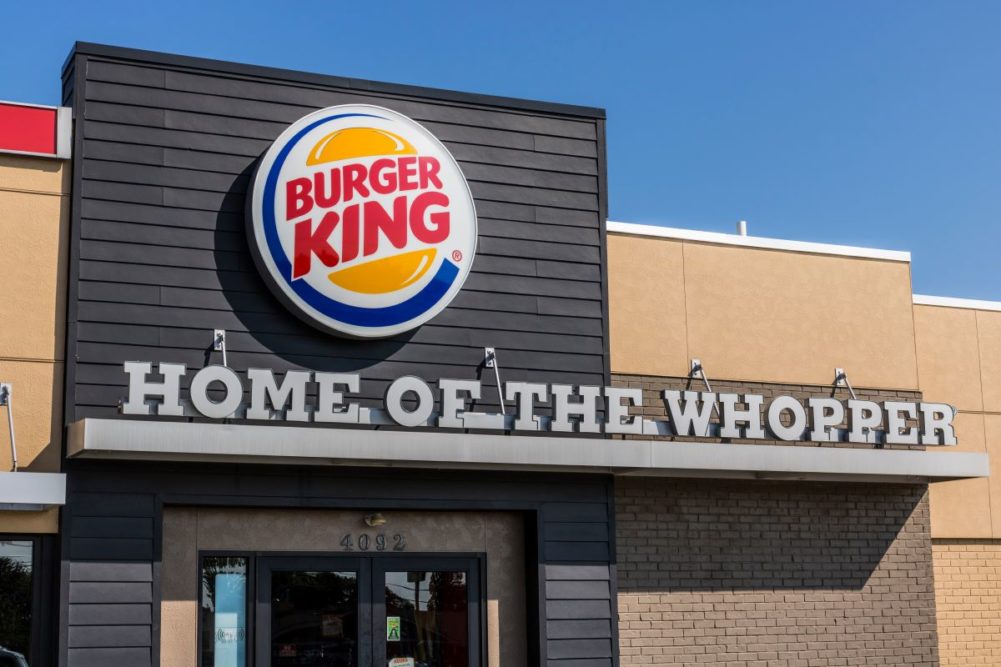TORONTO — Efforts to accelerate sales growth and drive franchise profitability at Burger King restaurants in the United States are beginning to take hold, said executives at parent company Restaurant Brands International, Inc.
This past September, the company began investing in advertising, remodels and relocations, restaurant technology, kitchen equipment and building enhancements as part of its Reclaim the Flame plan for Burger King. In the recent quarter, value deals, growth in digital sales and benefits from strategic pricing drove comparable sales up 8.7% year-over-year and system-wide sales up 8.1%, said Joshua Kobza, chief executive officer.
“Traffic was modestly negative for the quarter, and we are very focused on moving the traffic to the positive category over the course of the year,” Mr. Kobza said during a May 2 conference call to discuss first-quarter earnings. “I think what’s encouraging to us is that we are seeing sequential improvements. The traffic was more negative in Q4 and got a little bit better in Q1. And we’re seeing a stabilization in sort of our monthly traffic levels, which is very encouraging to us. I think the team is highly focused on growing traffic as we move through the remainder of this year. I think we’re expecting to see some moderation in pricing increases. We’re focused a lot on operations. That’s going to be kind of a big driver of improvements in traffic.”
The company expects to close a total of 300 to 400 Burger King restaurants in the United States this year, Mr. Kobza said, adding, “though I would emphasize that there is a fair degree of uncertainty regarding exact numbers, and this will depend to some extent on the pace of recovery in the business, which we’ve already begun to see.”
“Certainly, the team’s goal is to improve the overall health of the system, which we’re already seeing with improved top-line sales and restaurant profitability,” he said. “One of the most important factors is the willingness of our franchisees who have troubled restaurants to work with us and commit to implementing the changes necessary. If they can’t, we have operators ready to step in and do what’s required. I do expect a bit more short-term noise as we transition some portfolios into the hands of top local operators, but I think we are moving in the right direction to improve our foundation for the long term.”
Restaurant Brands net income for the first quarter ended March 31 was $277 million, equal to 61¢ per share on the common stock, up 2.6% from $270 million, or 59¢, in the prior-year period. The increase was driven by increases in segment income across all of the company’s segments, a decrease in income tax expense and a favorable change from the impact of equity method investments, which were partially offset by unfavorable foreign currency exchange movements, a charge from other operating expenses, an increase in share-based compensation and non-cash incentive compensation expense, an increase in Firehouse Subs transaction costs and an increase in interest expense.
Revenues totaled $1.59 billion, up 9.7% from $1.45 billion.
Consolidated comparable sales increased 10%, with system-wide sales up 15% year-over-year, and net restaurant growth was 4.2%.
“We delivered strong comparable sales in our home markets, including 15.5% growth at Tim Hortons Canada and 8.7% at Burger King US, in addition to 12.3% in our Burger King international business,” Mr. Kobza said. “Popeyes US grew 3.4%, and Firehouse US was up 6.7% for the quarter. Importantly, our top-line results, coupled with moderation in overall cost inflation, helped drive improvements in restaurant level profitability this quarter.”
The increase in comparable sales at Tim Hortons Canada was driven by higher traffic, which benefited from improved consumer mobility and new food offerings, including loaded bowls and wraps.
The Burger King international business grew system-wide sales by 19%, adding more than $400 million of incremental sales year-over-year, Mr. Kobza said.
“These results were driven by a 5.2% net unit growth and a healthy balance of traffic and check, resulting in comparable sales of 12.3%,” he said. “This quarter, we saw a good performance in some of our largest markets like France, Germany, Spain and Australia as well as some sales recovery in China following the easing of COVID restrictions. Digital ordering has fundamentally changed the business over the years and will continue to be a major driver of growth for the next several years.”
Popeyes had system-wide sales growth of 9.1% and year-over-year improvements in restaurant-level profitability. A limited-time offering of ghost pepper wings in January drove higher average check and traffic, drawing younger consumers, Mr. Kobza said.
“Given the product success, wings are now back on the menu as a permanent item, and you can expect to see more innovation from us in this fast-growing category,” he said.
Firehouse Subs had comparable sales growth of 6.1% and net unit growth of 2.3%, which led to a 7.5% improvement in year-over-year system-wide sales.
Shares of Restaurant Brands International trading on the New York Stock Exchange closed May 2 at $72.14, up 2.2% from the day before.





